Arachnids have long been misunderstood creatures, often portrayed as villains in horror films and the subject of many phobias. However, spiders can make fascinating, low-maintenance pets that require minimal space and care compared to traditional pets. For beginners venturing into the world of spider keeping, non-venomous species offer a safe entry point to observe these intricate creatures up close. While all spiders technically produce venom, the species discussed in this article possess venom that’s harmless to humans – making them ideal for novice arachnid enthusiasts. From their mesmerizing web-building techniques to their unique hunting behaviors, these eight-legged companions provide a window into a rarely appreciated corner of the animal kingdom. This guide will explore the best spider species for beginners, covering their care requirements, temperaments, and the special qualities that make them excellent starter pets.
Why Consider Spiders as Pets?
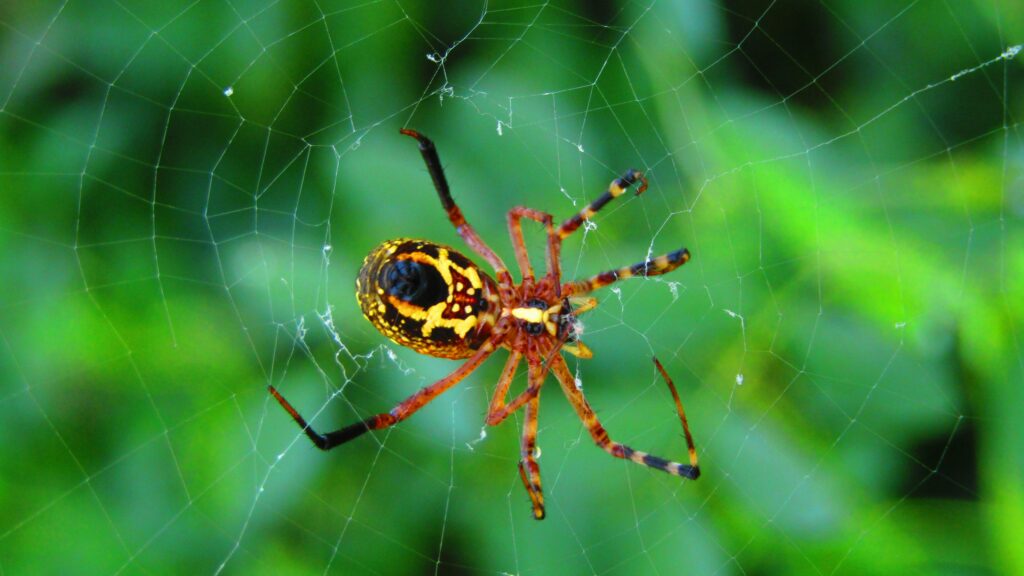
Unlike traditional pets, spiders require minimal space, making them ideal companions for apartment dwellers or those with limited room for pet habitats. Most species need feeding only once or twice a week, perfect for busy individuals who cannot commit to daily pet care routines. Spider habitats rarely smell and produce minimal waste, eliminating the need for frequent deep cleaning sessions that come with mammalian or avian pets. Beyond their practical benefits, spiders offer fascinating behavioral displays from web construction to hunting techniques that provide endless educational opportunities. For nature enthusiasts looking to observe complex behaviors in a small package, few pets can compete with the wonder of watching a spider methodically construct its silken architecture.
Understanding Spider Care Basics
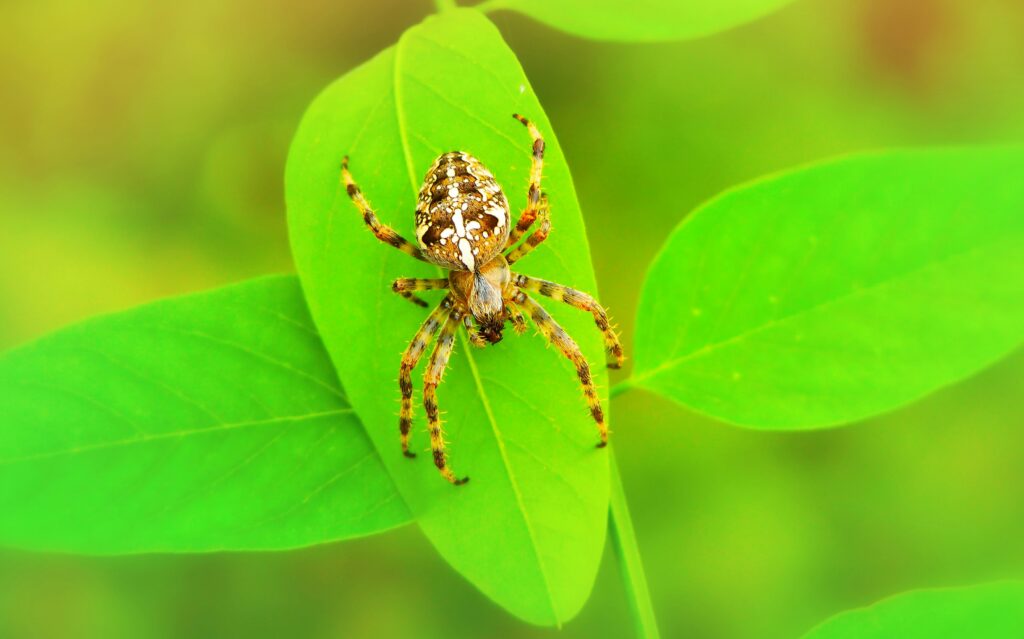
Before bringing home an arachnid companion, understanding the fundamentals of spider care is essential for both the keeper’s enjoyment and the spider’s wellbeing. Most pet spiders thrive in terrariums or specialized enclosures with appropriate ventilation, hiding spots, and climbing opportunities based on their natural behaviors. Temperature and humidity requirements vary by species, with tropical varieties generally needing higher humidity levels maintained through regular misting. Feeding typically consists of commercially available crickets, fruit flies, or mealworms appropriately sized for your specific spider – a general rule being prey should be no larger than the spider’s abdomen. While handling is possible with some species, it should be minimal and done with extreme care, as spiders are delicate creatures that can be injured by drops, and even non-venomous species may bite if stressed or threatened.
Jumping Spiders: Tiny Personalities
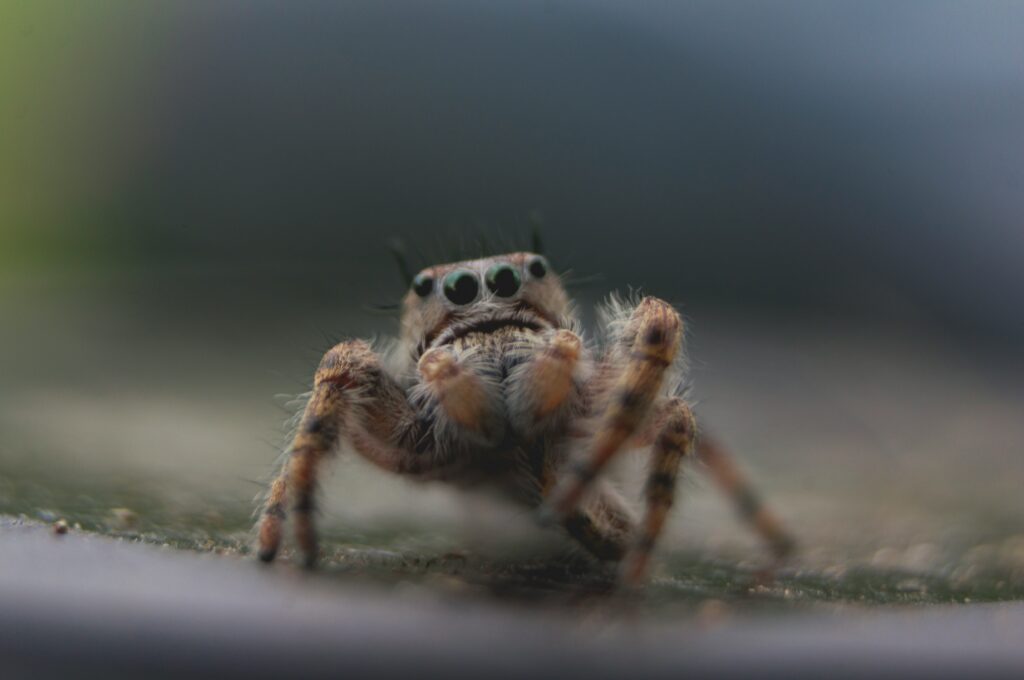
Jumping spiders (Salticidae family) rank among the most charismatic arachnids available to beginners, packing enormous personality into bodies rarely exceeding half an inch. Their most distinctive feature is their excellent vision provided by four large forward-facing eyes that give them an almost puppy-like appearance and allow them to track movement with remarkable precision. Unlike web-building species, jumping spiders are active hunters that stalk and pounce on prey, leaping distances up to 50 times their body length with impressive accuracy. These intelligent arachnids demonstrate curious behaviors, including apparent recognition of their keepers, interactive responses to movement outside their enclosures, and complex courtship dances that fascinate observers. Species like Phidippus audax (bold jumping spider) and Phidippus regius (regal jumping spider) make excellent starter pets due to their manageable size, docile nature, and engaging behaviors that even arachnophobes often find endearing.
Zebra Jumping Spider: The Pocket-Sized Pet
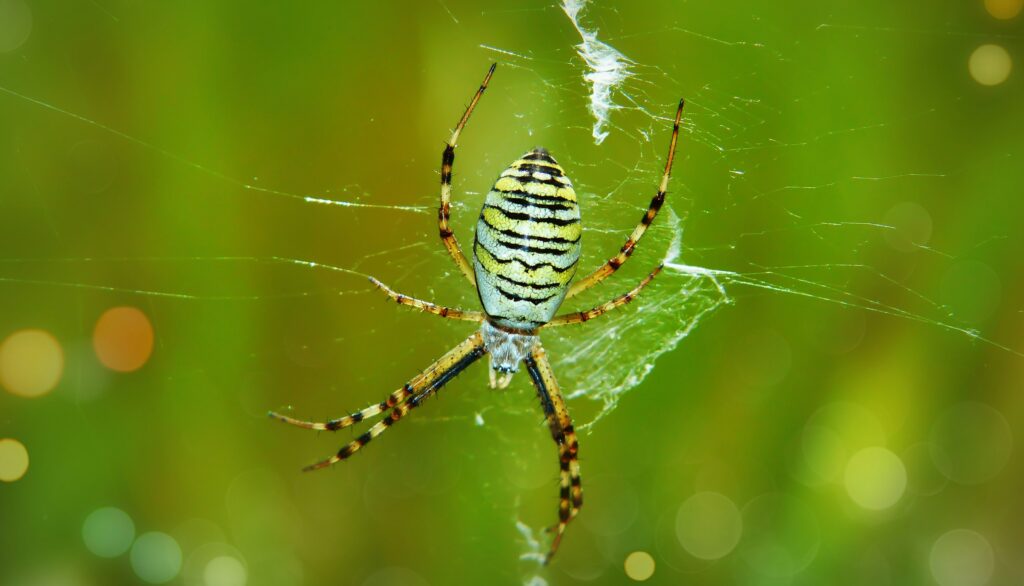
The zebra jumping spider (Salticus scenicus) stands out as perhaps the most beginner-friendly of all arachnid pets, perfectly suited for those just starting their spider-keeping journey. These diminutive hunters measure just 5-7mm in length, featuring distinctive black and white striped patterns that give them their zebra namesake and make them easily identifiable even for novice enthusiasts. Their care requirements are minimal – a small container with some ventilation, a few twigs for climbing, and occasional misting for hydration is sufficient to keep these hardy spiders thriving. Feeding is straightforward, with zebra jumpers readily accepting fruit flies and tiny crickets offered once every 2-3 days, making them ideal for keepers on tight schedules. Perhaps most appealing is their naturally curious disposition; these spiders will often observe their keepers with noticeable interest, turning to track movement and even approaching fingers pressed against their enclosure glass.
Brazilian Black Tarantula: The Gentle Giant
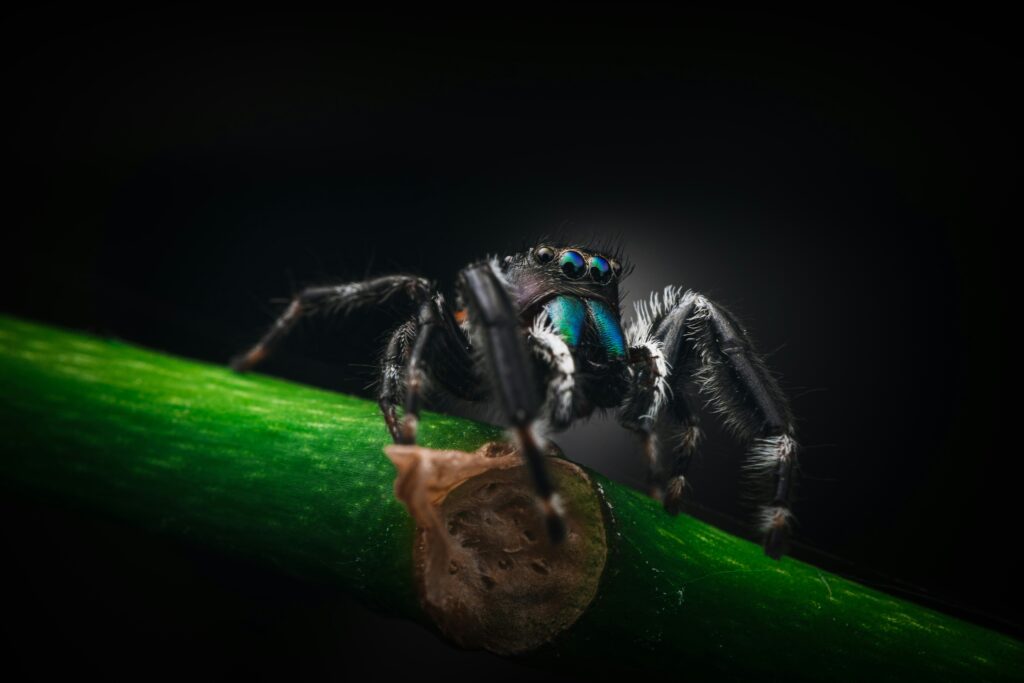
The Brazilian Black tarantula (Grammostola pulchra) has earned its reputation as the “golden retriever” of the tarantula world, making it an ideal first tarantula for beginners despite its intimidating size. These impressive arachnids feature a velvety black coloration across their entire body, growing to a leg span of 7-8 inches at maturity, yet possess one of the most docile temperaments in the tarantula family. Unlike many tarantula species, Brazilian Blacks rarely display defensive behaviors such as rearing up, hair flicking, or attempting to bite, instead typically remaining calm even when their enclosure is opened for maintenance. Their longevity is remarkable, with females potentially living 20-30 years in captivity, allowing keepers to form long-term bonds with these patient creatures. Care requirements remain straightforward: a terrestrial setup with several inches of substrate for burrowing, moderate humidity maintained through occasional substrate misting, and a feeding schedule of appropriately-sized crickets or roaches once weekly.
Mexican Red-Knee Tarantula: The Colorful Classic
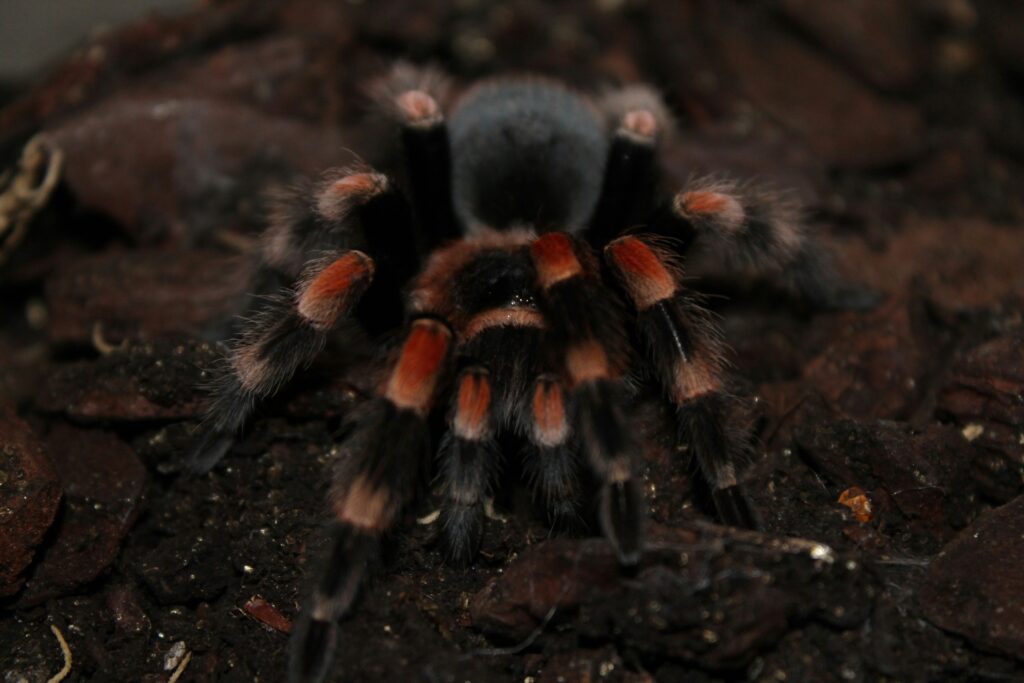
The Mexican Red-Knee tarantula (Brachypelma hamorii) has become an iconic beginner species, recognizable by its striking orange-red knee patches contrasting against a black body. This terrestrial tarantula grows to an impressive 5-6 inch leg span while maintaining a generally calm demeanor that has made it a staple in the pet trade for decades. Mexican Red-Knees move with deliberate slowness, making their behaviors easy to observe and predict – a valuable trait for novice keepers who may be nervous around faster-moving arachnids. Their husbandry requirements remain straightforward: a terrestrial enclosure with 3-4 inches of substrate, a hide spot such as half a flower pot or cork bark, and a small water dish to maintain humidity. These hardy tarantulas thrive at room temperature without supplemental heating, can go weeks between meals if necessary, and generally live 15-30 years for females, making them a long-term commitment that rewards patient observers.
Curly Hair Tarantula: The Beginner’s Best Friend
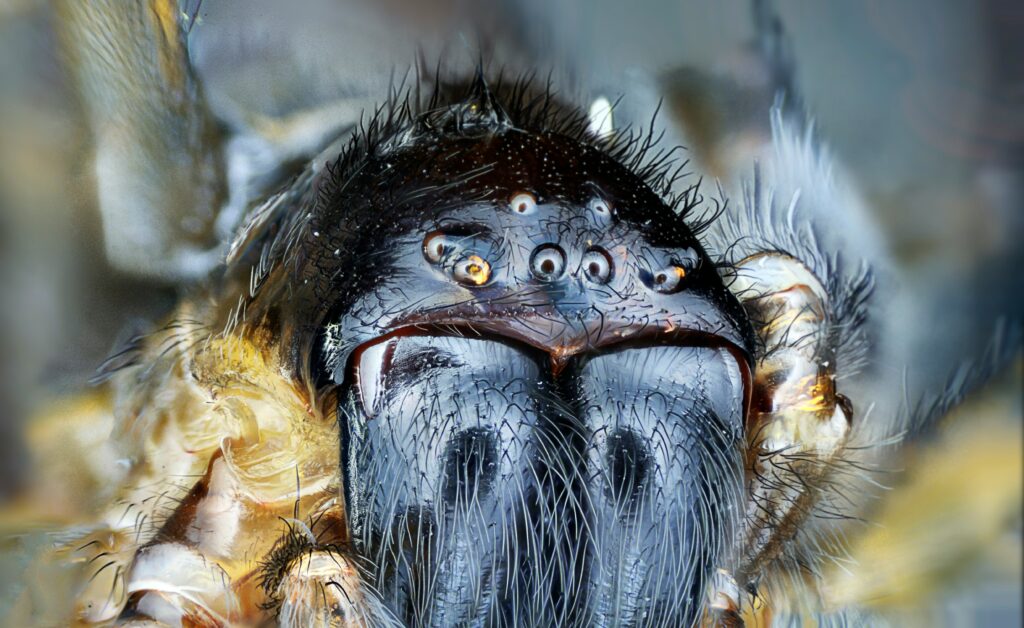
The Curly Hair tarantula (Tliltocatl albopilosus, formerly Brachypelma albopilosum) earns its charming name from the distinctive curly or wavy hair covering its body, giving it an endearing, almost disheveled appearance. Native to Central America, these tarantulas combine a gentle temperament with impressive hardiness, able to thrive even under less-than-perfect conditions – making them forgiving of the minor mistakes beginners often make. Their moderate growth rate sees them reaching a full leg span of approximately 5-6 inches, large enough to be impressive without being intimidating to new keepers. When startled, Curly Hairs typically retreat rather than display aggressive behavior, and they rarely utilize their urticating hairs (irritating defensive hairs flicked from the abdomen) compared to other species. Maintenance involves simple weekly cricket feedings, occasional misting to maintain moderate humidity, and minimal substrate changes, making them an excellent “set and forget” pet option for those seeking a fascinating but undemanding arachnid companion.
Pink Toe Tarantula: The Arboreal Option
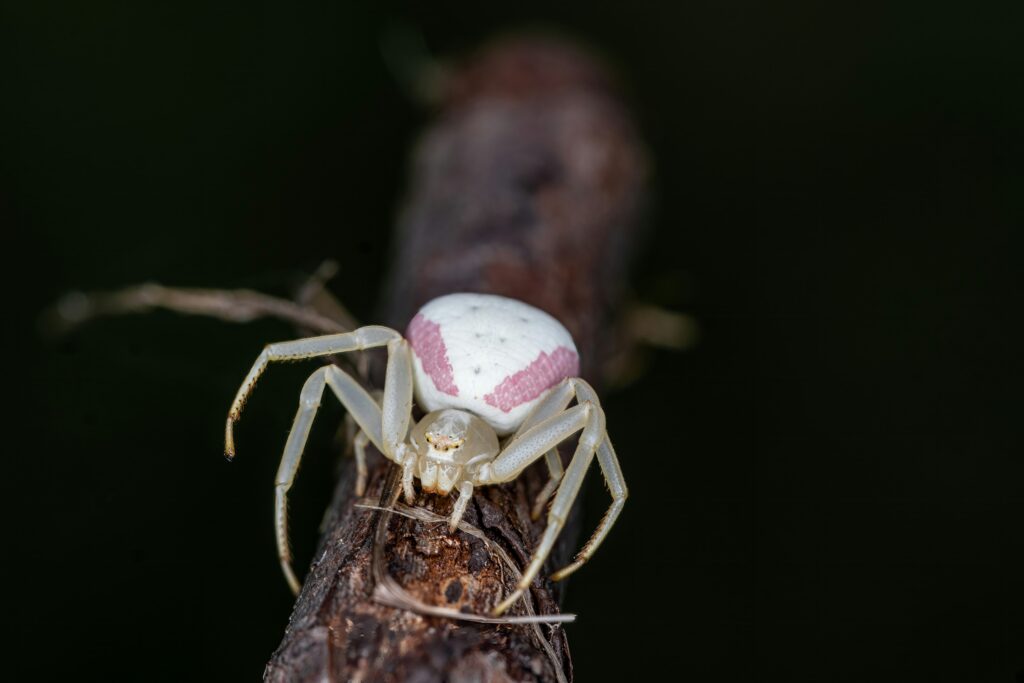
The Pink Toe tarantula (Avicularia avicularia) introduces beginners to the fascinating world of arboreal (tree-dwelling) spiders with its striking appearance featuring a dark body and distinctive pink-tipped legs. Unlike terrestrial tarantulas, Pink Toes construct silken tubes in elevated positions, creating spectacular webbed architecture that transforms their enclosure into a living art piece. Their enclosure needs differ from ground-dwelling species, requiring vertical space with climbing structures such as cork bark, branches, or artificial plants positioned to create multiple anchor points for web construction. Pink Toes move with impressive speed when motivated but generally maintain a docile demeanor, making them suitable for keepers who appreciate more active spider behavior while still wanting a gentle species. These tarantulas require higher humidity levels maintained through regular misting and good ventilation to prevent stagnant air, creating an interesting challenge for beginners ready to advance slightly beyond the most basic care requirements.
Desert Blonde Tarantula: The Hardy Desert Dweller
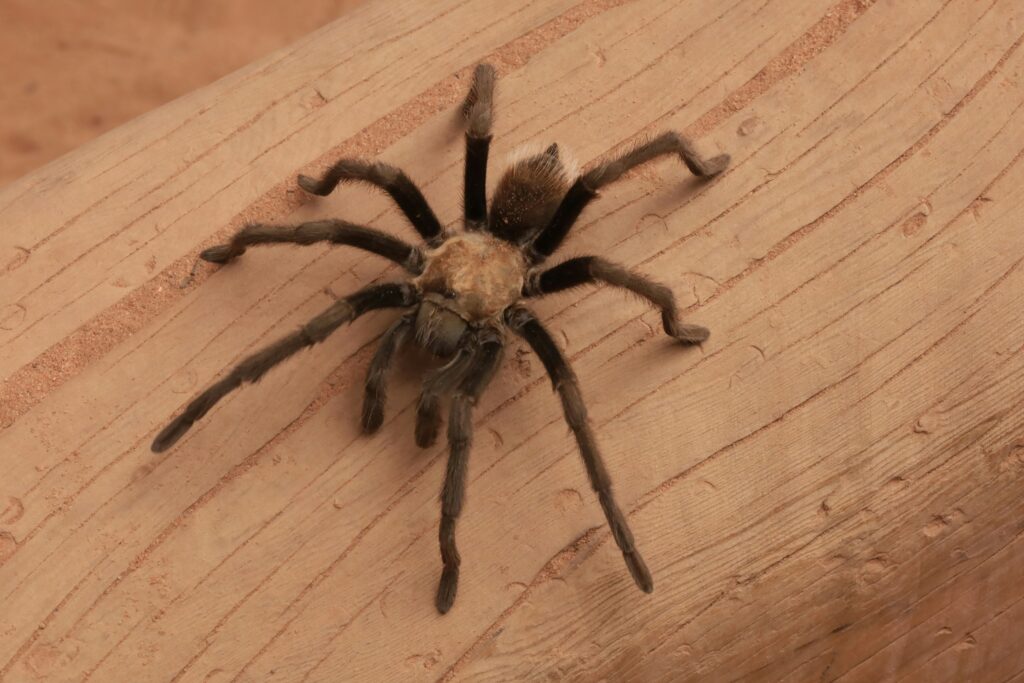
The Desert Blonde tarantula (Aphonopelma chalcodes) represents one of North America’s native tarantula species, naturally occurring in the Sonoran Desert regions of Arizona and Mexico. This terrestrial species showcases a beautiful tan to light brown coloration with distinctive blonde highlights on its legs, creating an elegant appearance that distinguishes it from darker tarantula varieties. Desert Blondes thrive in dry environments, requiring minimal humidity and making them exceptionally forgiving for beginners concerned about maintaining precise environmental parameters. Their deliberate movements and reluctance to bite make them ideal handling candidates for keepers wanting occasional, supervised interaction with their arachnid pet. Care remains straightforward with a focus on dry substrate, occasional water dish refills, and feeding schedules of one appropriately-sized cricket every 1-2 weeks, creating a truly low-maintenance pet option that still provides the fascination of observing a large arachnid.
Orb Weavers: The Web Architects
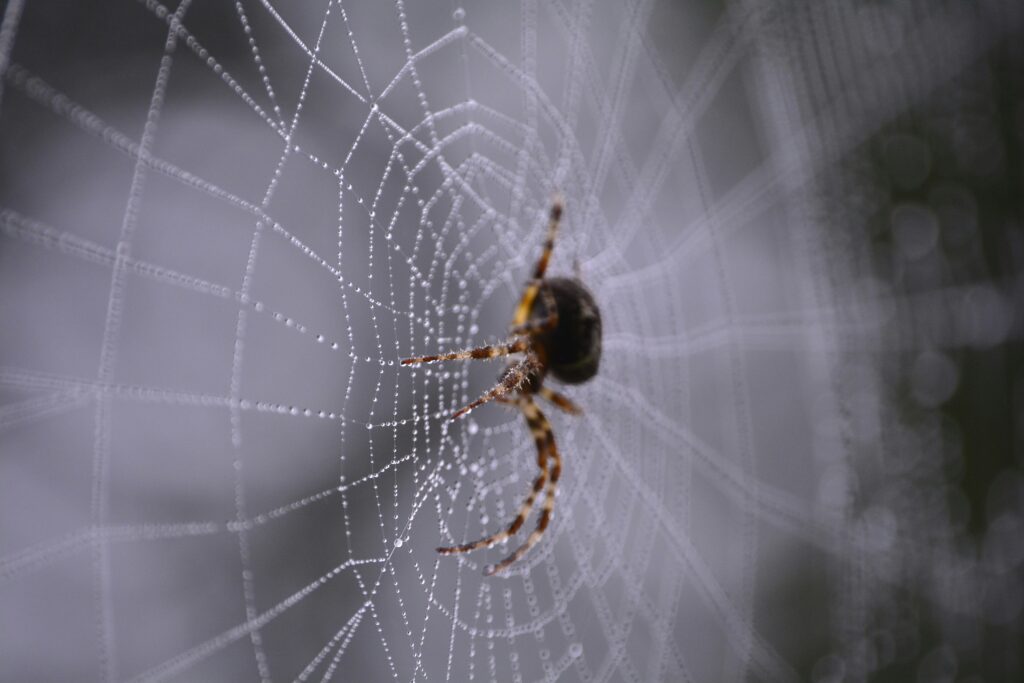
Orb weaver spiders (family Araneidae) offer beginners the opportunity to observe some of nature’s most spectacular web construction, with species like the garden orb weaver (Argiope aurantia) creating the classic spiral wheel webs that epitomize spider artistry. Unlike tarantulas, these medium-sized spiders typically live only 1-2 years but compensate with fascinating behaviors including daily web reconstruction that allows keepers to repeatedly witness the intricate silk-laying process. Their enclosures require specific design considerations, including vertical space with multiple anchor points positioned to accommodate their large, flat webs that can span impressive diameters. Feeding orb weavers provides particular entertainment as they rapidly wrap prey in silk before delivering a bite, demonstrating efficient hunting techniques that differ dramatically from ambush predators like tarantulas. While not typically handled due to their fragile nature, orb weavers reward observers with dramatic color patterns, distinctive body shapes, and constant activity that makes their enclosures functioning ecosystems rather than static displays.
Wolf Spiders: The Active Hunters
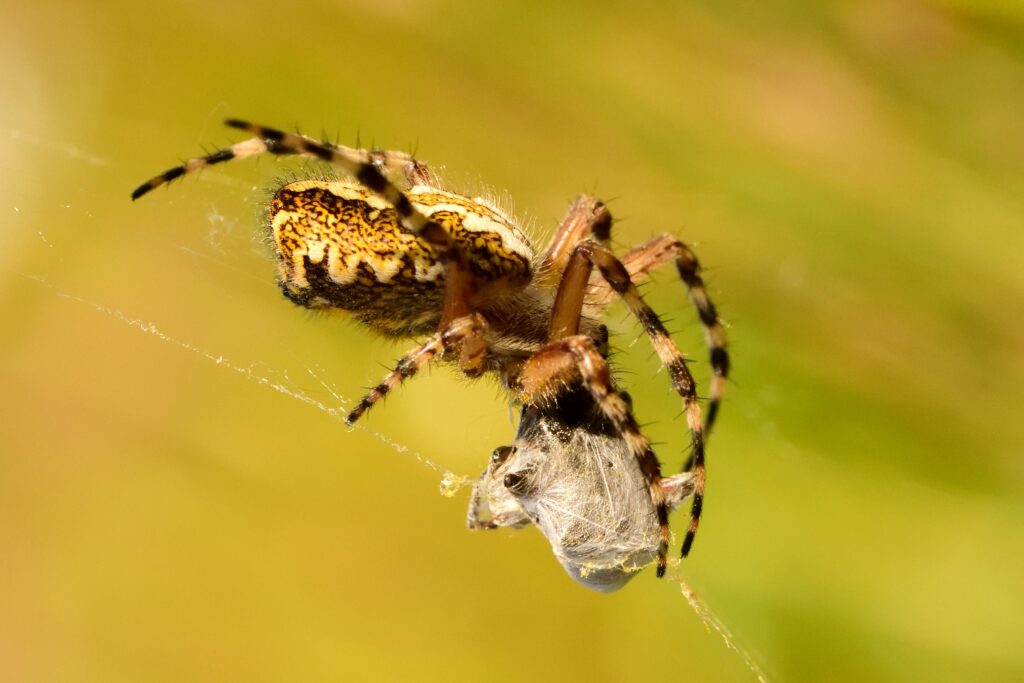
Wolf spiders (family Lycosidae) represent excellent beginner species for those who prefer active hunters to web-builders, as these ground-dwelling arachnids actively pursue prey rather than relying on silk traps. Species like Hogna carolinensis (Carolina wolf spider) feature excellent vision with a distinctive eye arrangement including two large forward-facing eyes that give them an alert, attentive appearance as they track movement in their environment. Female wolf spiders display fascinating maternal behavior by carrying their egg sacs attached to their spinnerets, and later carrying dozens of spiderlings on their backs – providing an incredible opportunity to observe reproductive behaviors rarely seen in other pet invertebrates. Their enclosures should mimic natural ground habitats with several inches of substrate for burrowing, scattered leaves or moss for hiding, and minimal climbing structures as these spiders rarely venture far from the ground. While generally shy and preferring to retreat when disturbed, wolf spiders move with impressive speed when hunting, creating dynamic displays of natural predatory behavior that make their feeding times particularly engaging for observers.
Housing Your Spider: Enclosure Essentials
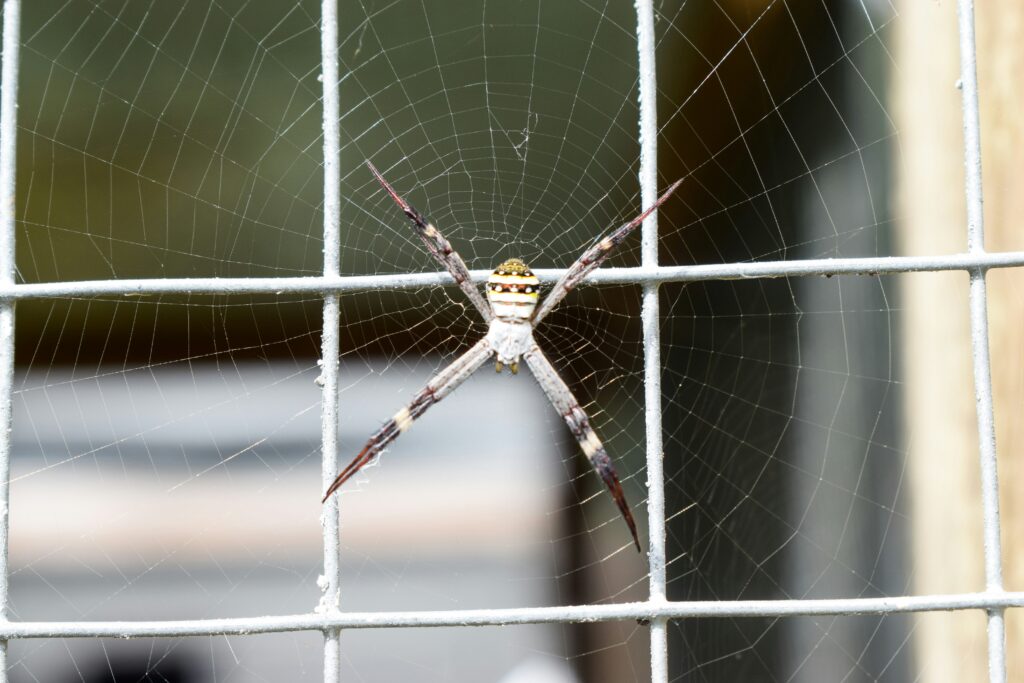
Creating the proper environment for your spider begins with selecting an appropriately sized and designed enclosure based on your chosen species’ natural behaviors and adult size. For terrestrial species like most beginner tarantulas, enclosures should prioritize floor space over height, while arboreal species require taller enclosures with vertical climbing opportunities. Ventilation remains crucial for all species but must be balanced with humidity requirements – species from tropical regions need fewer ventilation holes than desert-dwelling varieties. Substrate selection varies by species, with coconut fiber (coir), peat moss, or specialized arachnid substrates providing appropriate burrowing material for terrestrial species, while arboreal setups may use less substrate but require more decorative elements for web anchoring. Hiding spots are essential for spider security, with cork bark, commercial reptile hides, or even repurposed household items like flower pots providing necessary retreat spaces that help reduce stress and mimic natural sheltering behaviors.
Feeding Your Spider: Nutrition Basics

Establishing a proper feeding routine for your spider involves understanding both the appropriate prey items and feeding frequency for your specific species and specimen. Most beginner-friendly spiders thrive on a diet of commercially available feeder insects including crickets, mealworms, superworms, and flightless fruit flies for smaller species, all of which can be purchased from pet stores or online suppliers. Prey should generally match the spider’s size – a good rule of thumb being that food items should be no larger than the spider’s abdomen to prevent injury during feeding attempts. Feeding frequency varies by species and age, with growing spiderlings typically requiring food every 2-3 days, while adult tarantulas may eat just 1-2 times per week, and some species may fast for extended periods during molting cycles or seasonal changes. Providing a shallow water dish for larger species helps maintain hydration, though many spiders obtain sufficient moisture from their food and occasional misting of their enclosure.
Understanding Molting: The Vulnerable Phase

Molting represents one of the most critical and vulnerable periods in a spider’s life cycle, during which they shed their old exoskeleton to accommodate growth. Signs of impending molts include decreased appetite or food refusal, increased web production, duller coloration, and in tarantulas, the development of a bald spot on the abdomen where specialized hairs have been rubbed away in preparation. During the molting process, spiders position themselves on their backs or sides in what may alarm new keepers who mistake the behavior for illness or death – this posture allows them to gradually extract themselves from their old exoskeleton. Post-molt spiders appear larger, more vibrantly colored, and with fully restored body parts including regrown limbs that may have been previously lost, but their new exoskeleton remains soft and vulnerable for several days to a week. Feeding should be avoided completely during this period, and disturbances minimized as premature handling or prey introduction can result in fatal injuries to the spider’s unhardened exoskeleton.
Handling Guidelines: When and How
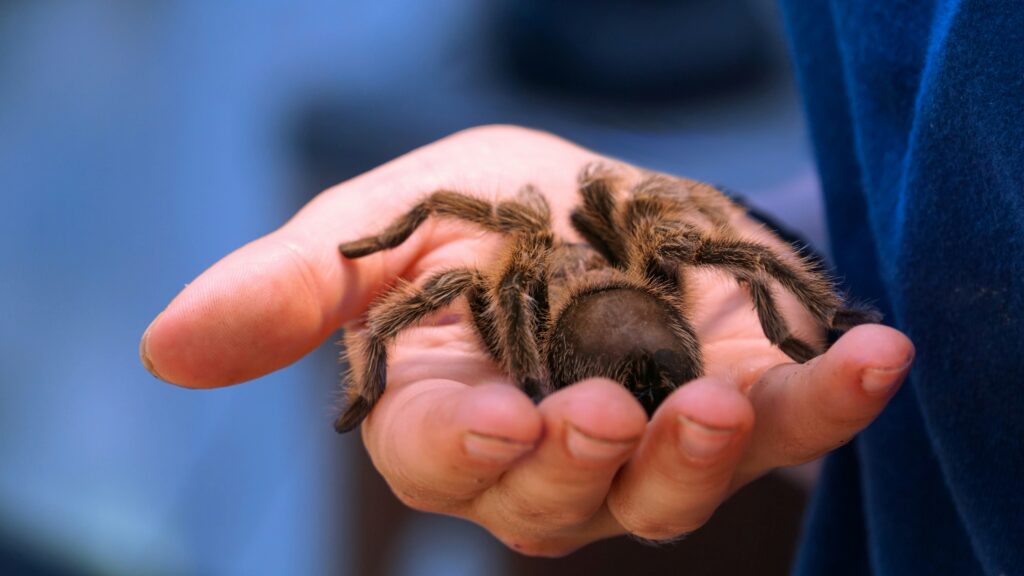
While handling pet spiders provides unique opportunities for connection, it should always be approached with the spider’s welfare as the primary concern rather than the keeper’s desire for interaction. For beginners, handling should be limited to necessary enclosure maintenance or transfers, with recreational handling gradually introduced only with the most docile species like Brazilian Black or Curly Hair tarantulas. The proper handling technique involves allowing the spider to walk voluntarily onto your open hand rather than grasping it, always conducted close to a soft surface with hands held no more than a few inches above this safety cushion to prevent injuries from falls. Some species like jumping spiders may tolerate brief handling sessions better than others, but signs of stress including rapid movement, defensive postures, or hair flicking in tarantulas should prompt an immediate and gentle return to the enclosure. Remember that even non-venomous species may bite if threatened, and while not dangerous, such bites can be painful and represent a significant stress event for the spider.
Common Health Issues and Prevention
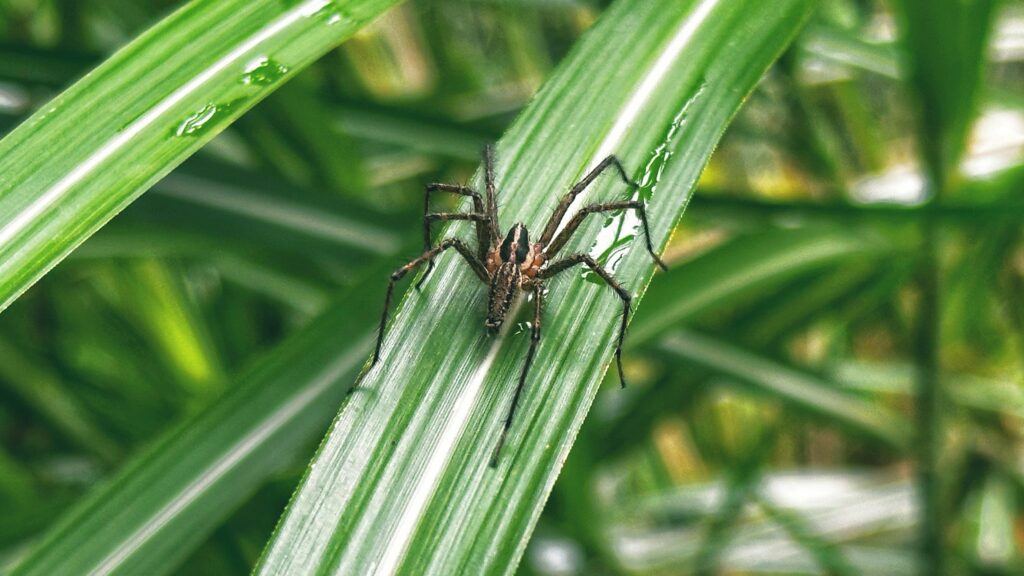
Despite their hardiness, pet spiders may encounter several health challenges that attentive keepers should monitor for and prevent. Dehydration represents one of the most common issues, manifested through a shriveled abdomen appearance, which can be prevented through appropriate humidity levels and access to water sources either through dishes for larger species or enclosure misting for smaller varieties. Mite infestations occasionally plague captive spiders, appearing as tiny white or red dots moving on the spider’s body or throughout the enclosure, requiring complete habitat sterilization and potentially veterinary intervention with specialized acaricides. Impaction can occur when spiders consume substrate or

